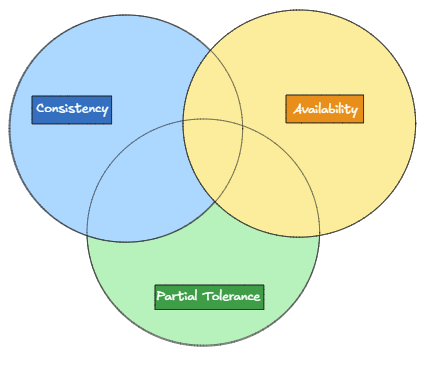Distributed System Trade-offs (CAP & Beyond)
CAP Theorem

It is impossible for a distributed data store to guarantee all three of the following properties -
- Consisteny (C) - Every read gets latest write.
- Availability (A) - Every request gets a response.
- Partial Tolerance (P) - System continues working despite network failures.
Or more correctly -
“ A distributed system can be either consistent or available in the presence of a network partition. “
We prioritize Consistency in Banking transactions, Stock trading systems, while for Social media feeds and E-commerce carts, Availability is prioritized.
Note - ACID focusses on ensuring integrity and reliability of individual transaction in system while CAP deals with broader trade-offs across distributed system
PACELC theorem
The PACELC theorem extends CAP by addressing what happens when there is no partition:
- If a partition occurs (P), the system must choose between Availability (A) and Consistency (C).
- Else (E), when there is no partition, the system must choose between Latency (L) and Consistency (C).
Example - Amazon DynamoDB is PA/EL (chooses availability during partitions but optimizes for low latency when there are no partitions. Google Spanner is PC/EC (chooses Consistency in all cases)